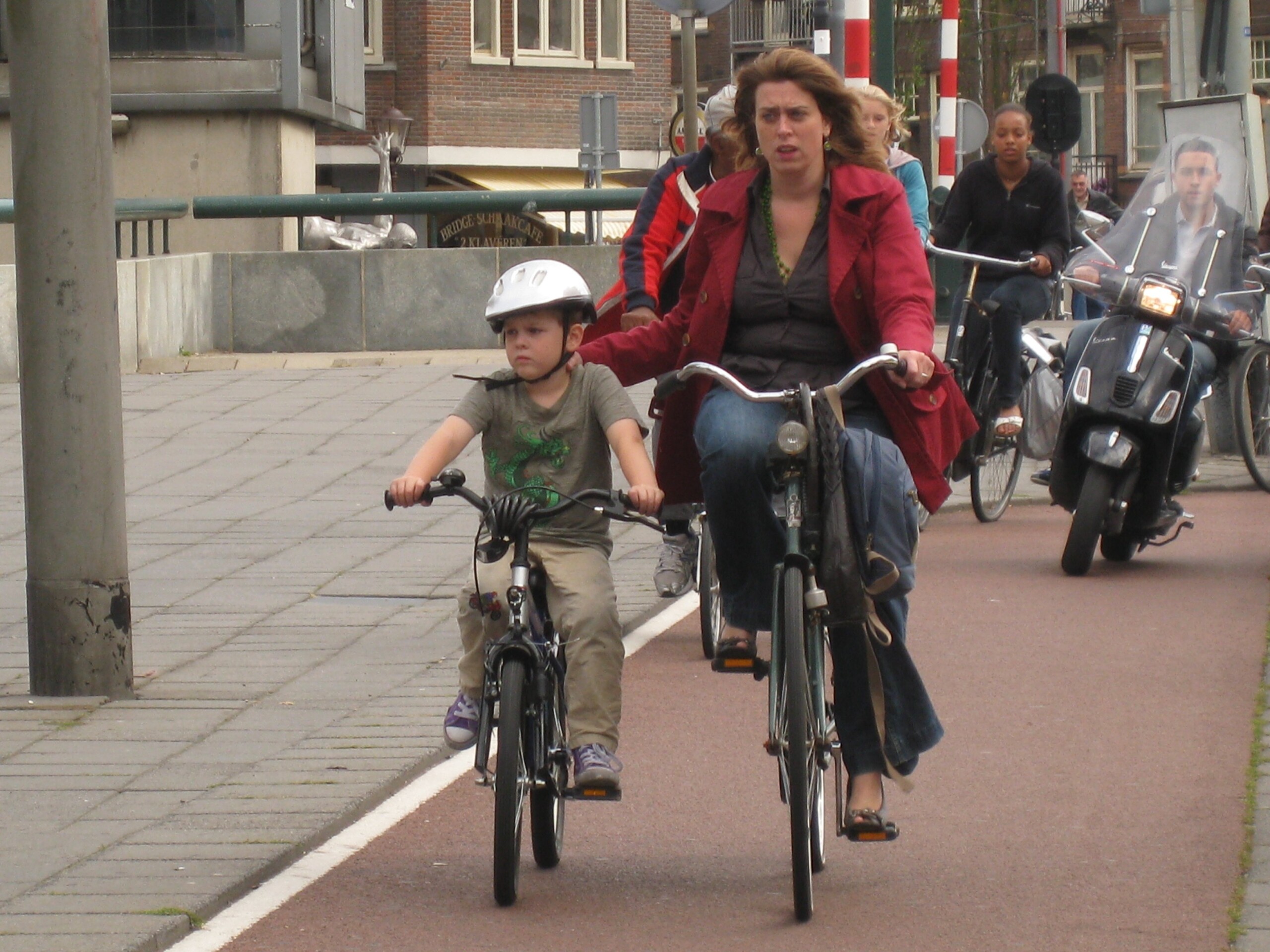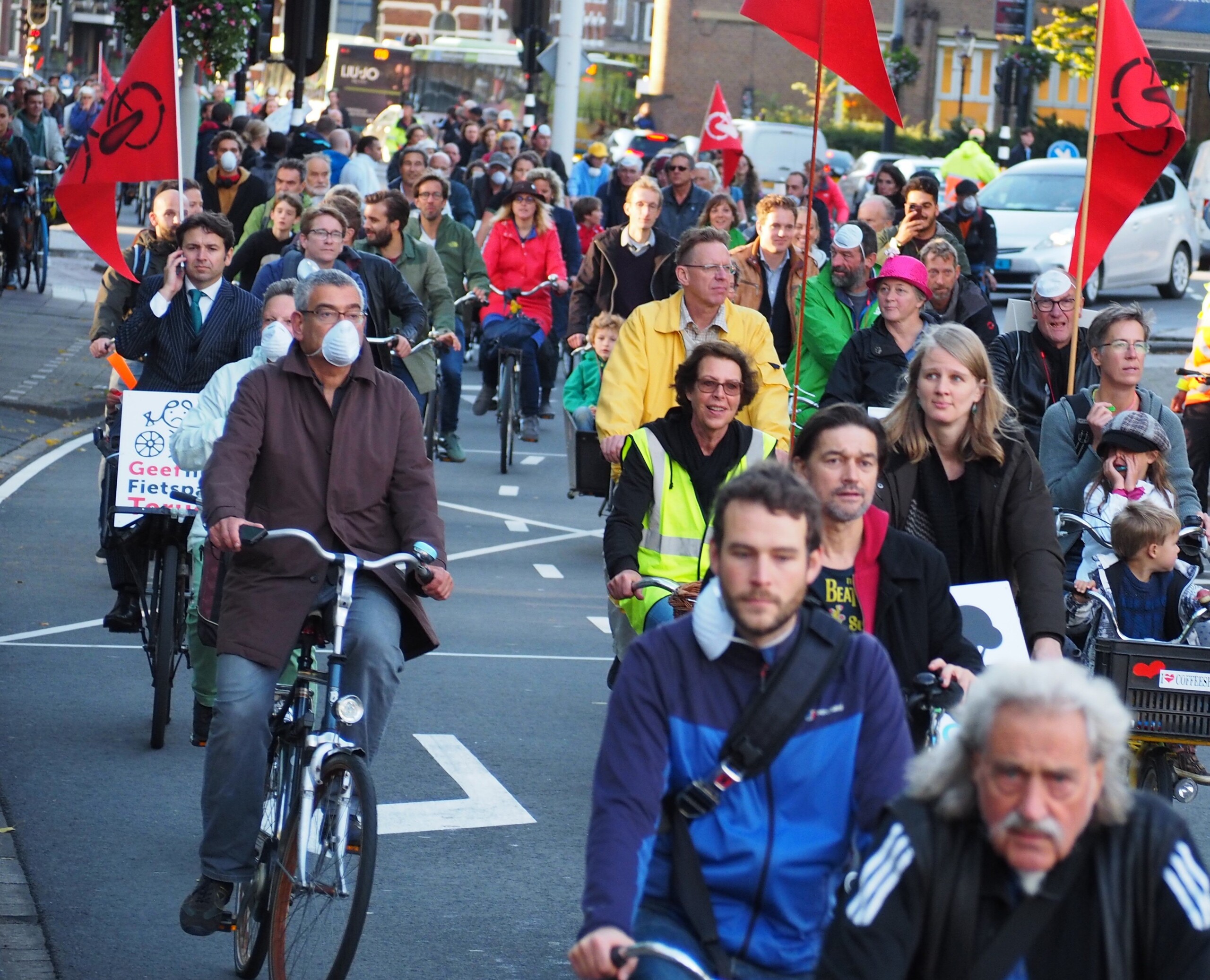Mopeds nearly took over the bicycle paths
Since 2005, the number of mopeds on Amsterdam’s cycle paths have increased enormously. This frustrated cyclists as the safety and quietness on the cycle paths was threatened. The number of accidents increased, mainly amongst moped riders. After a long legal and political process, mopeds have been banned from most bicycle paths in Amsterdam since spring 2019. Based on the new laws, moped riders now must ride on the roadway with helmets worn. This is the story about and rise and the taming of the moped.
History
In 1974, a new type of moped was introduced when moped riders were obligated to wear helmets. The new light-moped had limited engine power and was not allowed to travel faster than 20 km/h. With such a low speed, wearing a helmet was deemed unnecessary. The new light-moped was not very popular. For most people cycling was just as fast and as easy.
However, over the years the light-moped changed. The maximum speed was increased to 25 km/h and the engine power limitation was eased. In addition, it was no longer obligatory for the moped to have pedals. These changes meant that the light-moped could transform into a cool scooter that could easily travel much faster than the legally permitted 25 km/h.
More on the origin of the light-moped can be found here.

| Moped causes unsafety on bicycle path, 2014. Photo: Marjolein de Lange
This new style “light”-moped quickly became understandably popular for being handy and fast no requirement to wear a helmet and free parking. The latter is a major advantage, especially in a city like Amsterdam where motorists pay high parking fees.
Bike paths overwhelmed by scooters
Between 2007 and 2012, the number of scooters in Amsterdam grew from 9,000 to 25,000. Below is an illustrative video about the behaviour and nuisance of mopeds on bicycle paths.
Cyclists are inevitably intimidated by the many speeding scooters. Three quarters of scooters drive faster than 25 km/h. Consequently, the number of accidents increased especially among scooter riders themselves. In 2013, half of the traffic fatalities in Amsterdam were scooter riders.
Give back the bicycle path
Give back the bicycle path
In a bid to reclaim safety and quietness on the bike paths, concerned citizens and the Cyclists’ Union merged to form the action group ‘Fietspad Terug’ (freely translated as ‘Bicycle path Back’). The action group launched a petition, campaigned with the public and politicians, conducted research and demanded media to regain the bicycle path for cyclists.
Though the municipality of Amsterdam recognized the problem, finding a solution was a challenge. To take appropriate measures legislation needed to be changed and that is to be done at national level. However, at state level the urgency of the problem was less evident. And the opinion was driven by a strong pro-scooter lobby from the industry that pleaded to maintain the status and place of scooters on the road.

| Hundreds of cyclists demonstrate for moped-free cycle paths in September 2017. Photo: Fietsersbond Amsterdam.
Legislation and implementation
In 2013, the fout major cities asked the ministers for transport and justice for effective means to deal with the problems posed by the scooter. At first this led to stricter legislation for the speed of scooters. But this didn’t solve the problems as enforcement was difficult and time consuming.
Finally, in 2017, more extensive legislation about scooters was passed. Based on the new legislation, municipalities have the authority to send scooters to the roadway. Strict conditions make the implementation in practice complex and lengthy.
Ultimately, since the spring of 2019, “Moped to the roadway ” (Snorfiets naar de Rijbaan) applies on most streets in Amsterdam within the ringroad A10.
More information about this process, in Dutch, can also be found here at the site of Fietsersbond Amsterdam.

| Street marking for mopeds tot he roadway on Stadhouderskade near Weteringlaan. Photo: City of Amsterdam
Result, and maybe more
The measures appear to work well as various studies show that the number of accidents are decreasing sharply and most scooter riders adhere to the new rules.
By now other cities are actively working on implementing ‘snorfiets naar de rijbaan’.
In 2019, the majority of parliament appealed for a general helmet requirement for scooters to increase the safety of scooter riders in the whole of the Netherlands. As of November 2020, the minister for transport is yet to carry out this request and indicated that further investigations should be conducted.
More information
Our questions
What do you think about letting mopeds use the car lane instead of bicycle lane and paths? How does your city cope with mopeds? Share your thoughts, ideas and examples via Disqus below!
Location
City of Amsterdam
Amsterdam
Interesting documents

Nov 26, 2020
Evaluation Snorfiets naar de Rijbaan – Dutch version.pdf

Nov 27, 2020
Research Results Snorfiets naar de Rijbaan December 2019 – Dutch version

Feb 24, 2021







